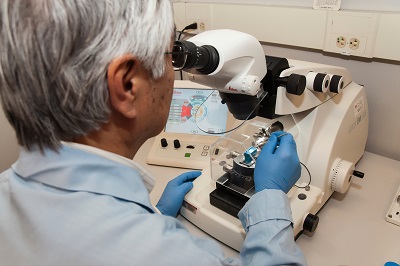What should be noted after Class C medical device registration with the Malaysian MDA?
Release time:2024-11-01 13:46:15
The author:
source:
Monitoring and Reporting: Implement a post-market surveillance system to monitor the device's performance and safety in the market. This includes tracking adverse events, user feedback, and any product complaints.
After successfully registering a Class C medical device with the Malaysian Medical Device Authority (MDA), there are several important considerations and ongoing responsibilities that manufacturers and their authorized representatives should be aware of:
1. Post-Market Surveillance
- Monitoring and Reporting: Implement a post-market surveillance system to monitor the device's performance and safety in the market. This includes tracking adverse events, user feedback, and any product complaints.
- Periodic Safety Update Reports (PSURs): Prepare and submit PSURs as required, summarizing safety and performance data from post-market activities.
2. Compliance with Regulatory Requirements
- Regulatory Changes: Stay updated on any changes to MDA regulations, guidelines, or standards that may affect your device or its compliance status.
- Renewal of Registration: Be aware of the registration validity period and ensure timely renewal of the registration before it expires, following MDA’s guidelines.
3. Quality Management System (QMS) Maintenance
- Continuous Improvement: Regularly review and update the QMS (ISO 13485) to address any non-conformities, corrective actions, and improvements identified during post-market surveillance.
- Internal Audits: Conduct periodic internal audits to ensure ongoing compliance with regulatory requirements and the effectiveness of the QMS.
4. Reporting Adverse Events
- Adverse Event Reporting: Establish a procedure for reporting adverse events or incidents related to the device to MDA within the specified timeframe (usually within 10 days for serious incidents).
- Field Safety Corrective Actions (FSCA): If significant safety issues arise, prepare and implement FSCA, which may include recalls, notifications to users, or device modifications.
5. Documentation Management
- Maintain Records: Keep thorough records of all post-market surveillance activities, complaints, adverse events, and any corrective actions taken.
- Documentation Updates: Update technical documentation as needed, especially if there are changes in the device design, manufacturing processes, or intended use.
6. Training and User Education
- User Training: Provide training and support to healthcare professionals and users on the proper use of the device, highlighting safety precautions and potential risks.
- Information Dissemination: Ensure that the latest instructions for use (IFU) and safety information are readily available to users and updated regularly.
7. Marketing and Promotion
- Adhere to Claims: Ensure that marketing and promotional materials align with the device's registered claims and intended use as stated in the registration application.
- Avoid Unsubstantiated Claims: Refrain from making unverified claims about the device's safety or efficacy that are not supported by the clinical data provided during registration.
8. Collaboration with MDA
- Maintain Communication: Keep open lines of communication with the MDA for any inquiries, clarifications, or guidance needed regarding compliance and regulatory matters.
- Participate in MDA Initiatives: Engage with MDA’s programs, workshops, and training sessions that enhance understanding of regulatory compliance and best practices.
9. International Market Considerations
- Global Compliance: If marketing the device internationally, ensure that it complies with the regulations of other countries, including obtaining necessary approvals or certifications (e.g., CE marking, FDA clearance).
- Change Notifications: If the device is modified or if there are changes in manufacturing, quality management, or clinical data, notify MDA and other relevant regulatory bodies as required.
10. Risk Management Updates
- Ongoing Risk Assessment: Continuously assess and manage risks associated with the device, especially as new information becomes available from post-market data and user feedback.
By adhering to these considerations, manufacturers can ensure the ongoing safety, effectiveness, and regulatory compliance of their Class C medical devices in the Malaysian market. Let me know if you have any more questions or need further assistance!

Contact Us:
Whatsapp or Wechat:+86 15816864648;email address:hito.lin@grzan.cn
.png)
.jpg)
.png)

.png)